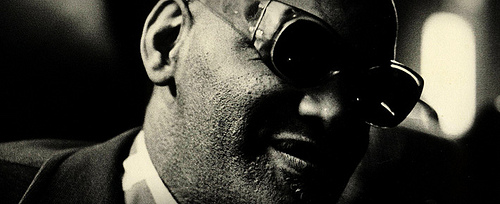Soul is one of the most popular genres in the music business today. Not only is it widely loved on its own, it is also a huge influence on various other types of music, and a major source of inspiration for musicians the world over.
In addition, soul has been the foundation of many sub-genres, with various interpretations of soul being linked to places around the world. Chicago soul, northern soul, and motown soul are just three examples of sub-genres to come from the original one.
How did soul music come to be so popular?

Origins of Soul
Like reggae, soul was born from the merging of already popular types of music. In this case, Afro-American gospel music and rhythm and blues – also important in the rise of reggae – came together.
The initial emergence of soul occurred in the 1950s and 1960s. Ray Charles is largely credited with being the founder of the genre, owing to his 1954 hit “I Got a Woman,” although fellow legends of the business like Little Richard and James Brown were also hugely influential at the time.
1960s and Atlantic Records
Much like Island Records is seen as the ‘home’ of reggae, Atlantic Records enjoys the same status within the soul genre. Founded in 1947, the label would release the music of many leading artists from this time, being the global leaders of early soul music through the 1950s and 1960s. Many people associate the Motown label with soul music, and although it is probably the leading label for the genre today, it wasn’t founded until 12 years after Atlantic.
With the likes of Charles and Brown already established as global superstars, other artists would emerge on the scene, clearly influenced by their contemporaries but also adding in their own elements to continue the evolution of soul. Peter Guralnick, a leading US music historian and critic, cites Solomon Burke and Ben E. King as artists who continued to help soul break down barriers and become globally popular.
A Female Superstar
In the late 1960s, soul was a male dominated genre. Although there were female artists, none had really made a huge impression on soul music. That all changed in 1967, when a number of Aretha Franklin hits (she was already an established artist, albeit only enjoying modest success) transcended the genre and made her a superstar in a matter of months.
Later Years
Soul quickly became an umbrella term to describe a wide variety of styles, from basic R&B to pop and even rock sounds. This led to the original ‘soul movement’ ending in the late 1960s, although the influence of the genre would continue to be massive.
Through the 1970s and beyond, while artists such as Al Green would continue to release records that were out and out soul, the other big names, most notably James Brown and Stevie Wonder, had moved onto funk and sounds that were pop-inspired more than anything.
Today, there is little in the way of what we’d call traditional soul music, but the influences of the genre can be seen everywhere, especially in R&B and hip-hop.
Image Author: ART’N’DECOR
Are you a guitarist? Check out our full range of online guitar lessonsAre you a saxophonist? Check out our full range of online saxophone lessons
Subscribe to Pro Music Tutor from as little as £7.99 per month
Related Posts
-
Is Music Theory Important to Modern Musicians?
The importance of music theory is a hot debate topic in the world of professional music. Some believe knowledge of music theory is what makes you a true musician, whereas some feel their lack of music theory knowledge is like a badge of honour. With the eternal debate over the importance of music theory raging […]
View All >> -
5 Ways Spanish Music Influenced the World
Contemporary popular music has transcended all national boundaries, with different types of music being performed and listened to in all corners of the world. Each culture also adds their own little tweaks and twists to the music, constantly creating new sounds and influences. Spanish music has deeply influenced the popular music we listen to today. […]
View All >>
Latest Blog Entries
-
The Benefits of Online Music Education
Learning music has never been easier, since the internet and modern technological advancements have opened the doors to countless possibilities, expanding the subjects people can choose from and how the lessons are taught. Now, people can study a whole host of music-related topics; from learning to play guitar or DJing, to understanding the inner workings […]
View All >> -
Essential Jazz Guitar Scales that are Easy to Learn
Improvising in jazz requires the ability to play in different keys over different chords. Results certainly do not come overnight, but with diligent practice, you would be surprised by what you can achieve. Many people ask me about what scales I use as if they were some big secret. While knowing your scales is very […]
View All >>
Blog Categories
- Categories
- Guitar Tips (93)
- History (36)
- How-To (38)
- Interviews (3)
- Music Industry (121)
- Prolinks Guitar (2)
- Prolinks Lessons (3)
- Prolinks Tutor's Profile (1)
- Saxophone Tips (40)
- Uncategorized (6)
Tags
Archive
- November 2018 (1)
- February 2018 (1)
- December 2017 (1)
- November 2017 (1)
- October 2017 (1)
- July 2017 (4)
- May 2017 (2)
- April 2017 (1)
- August 2016 (2)
- July 2016 (1)
- June 2016 (2)
- May 2016 (3)

